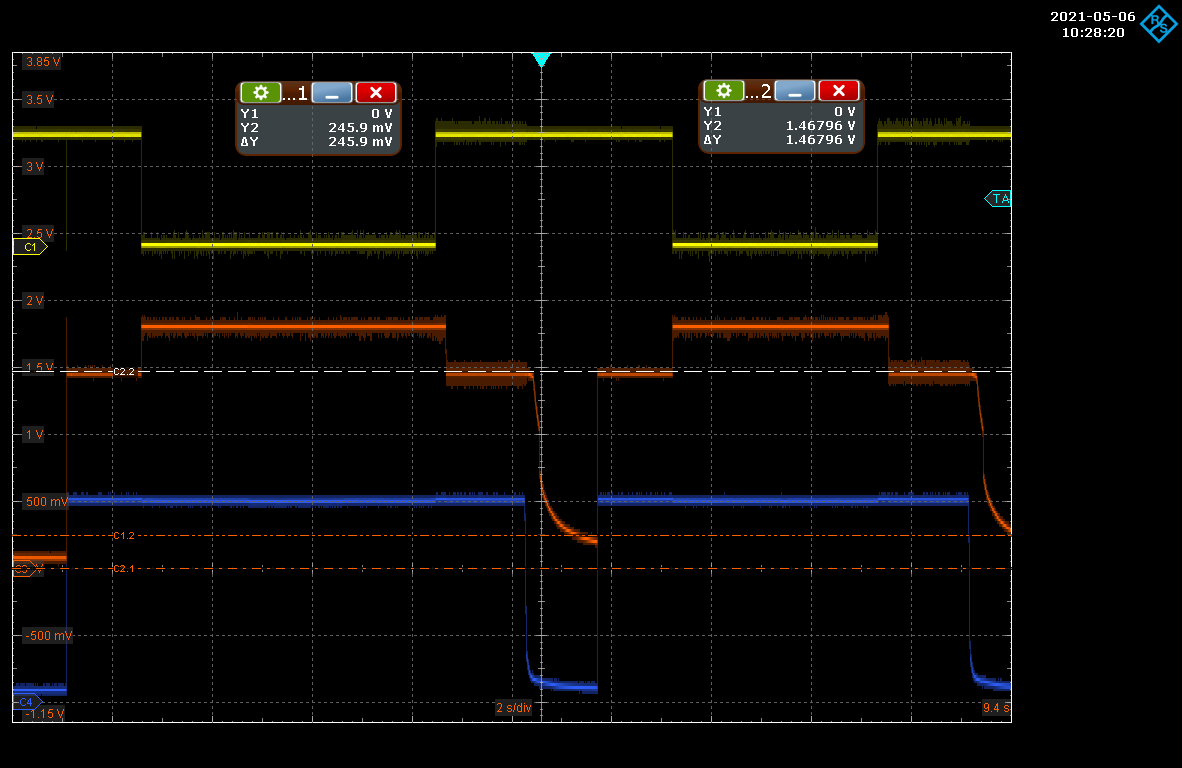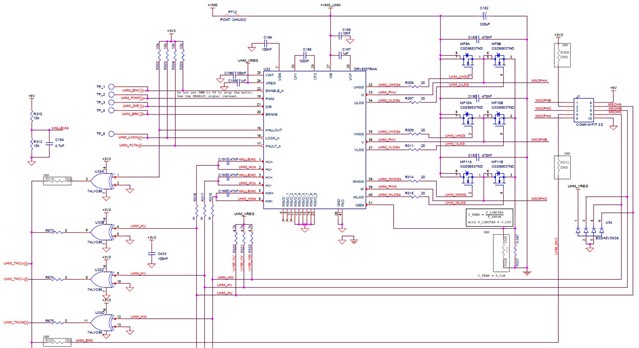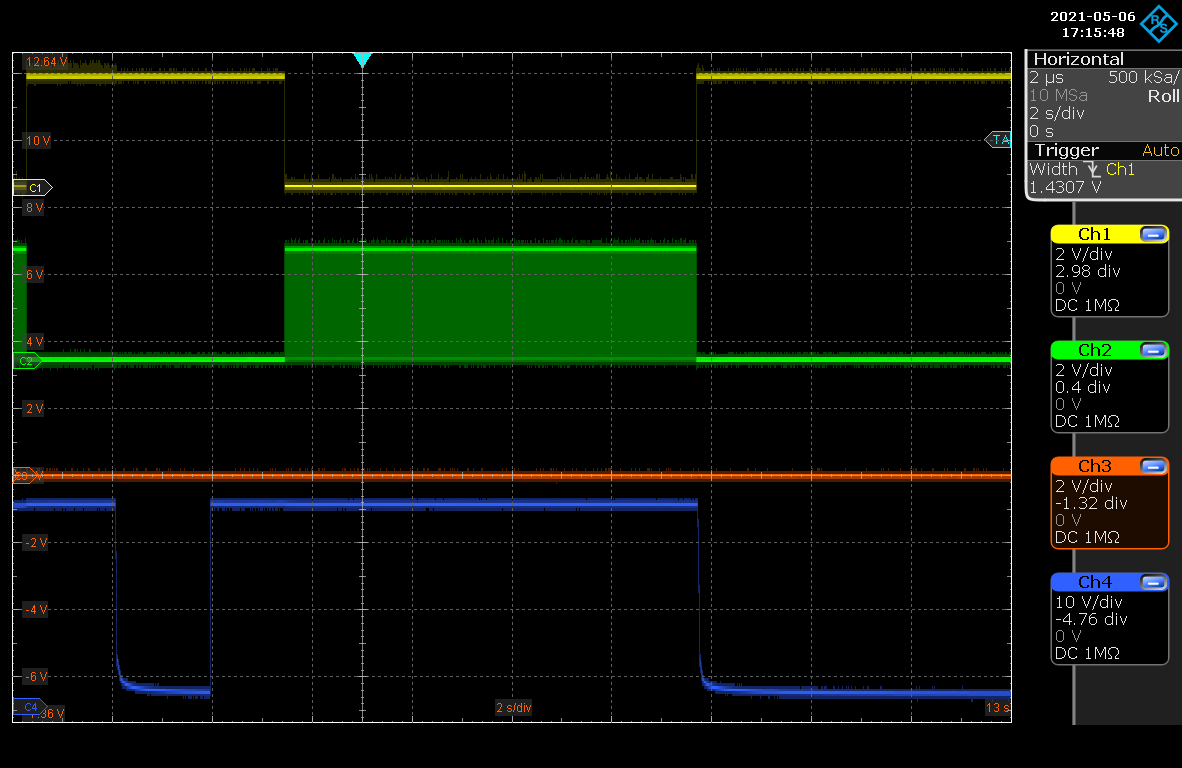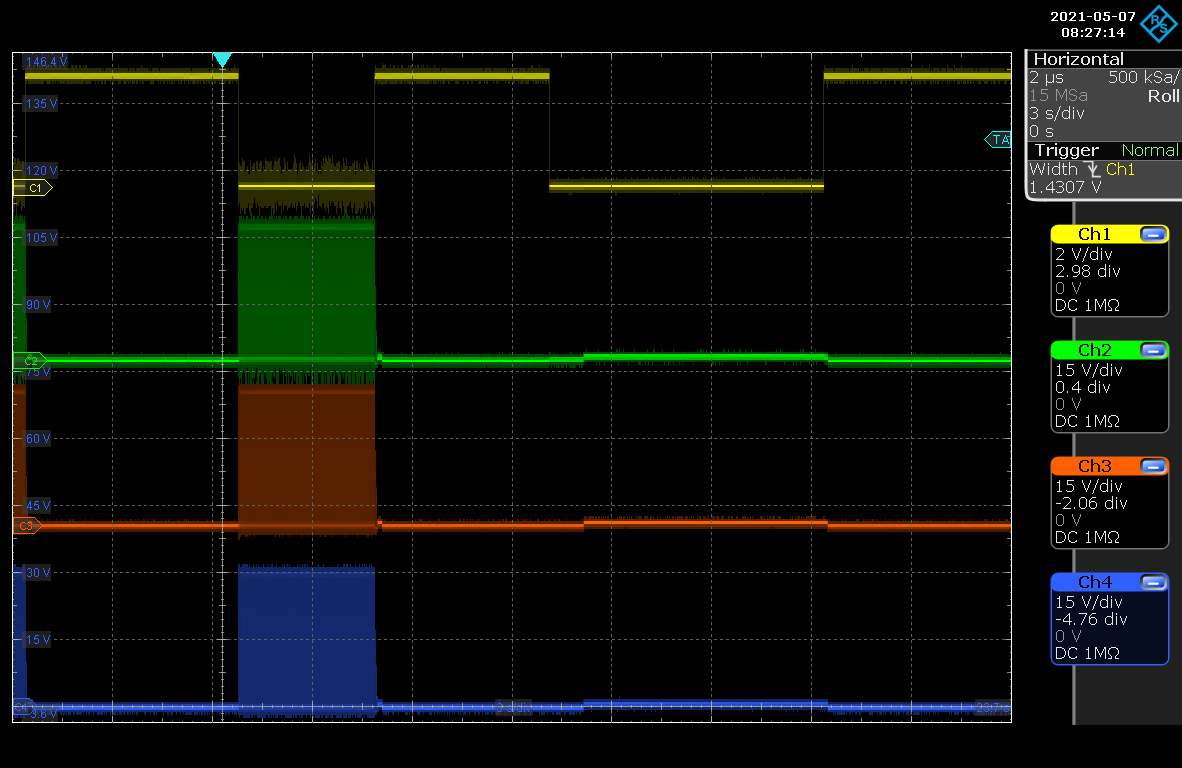Other Parts Discussed in Thread: DRV8306
Hi,
I am using the DRV8307 to control a DPM 57BL74B1 motor at 30V. I drive the controller using ENABLEn and PWM, in a unidirectional way and without using the brake function, i also cut off the power supply (VM), when I'm not using the motor.
My problem is:
If the time between the shutdown of the VM voltage and a subsequent restart is included in a certain interval, typically between 1-2 seconds (I verified that the VINT drops from 1.8V to about 0.3V and then rises to 1.8V), some samples of DRV8307 will not start correctly , leaving the motor stopped, although the ENABLEn and PWM signals are activated subsequently.
Apparently the internal logic does not seem to have started correctly, in fact the driving of the High-Side and Low-Side FETs do not evolve.
Is there a time specification that can explain this problem ?
It is normal for the VINT to remain at 1.45V, with the VM present and ENABLEn disabled ?
CH1 (Yellow) = ENABLEn (2V / Div.)
CH3 (Orange) = VINT (0,5V / Div.)
CH4 (Blu) = VM (10V / Div.)

Daniele Bertola






